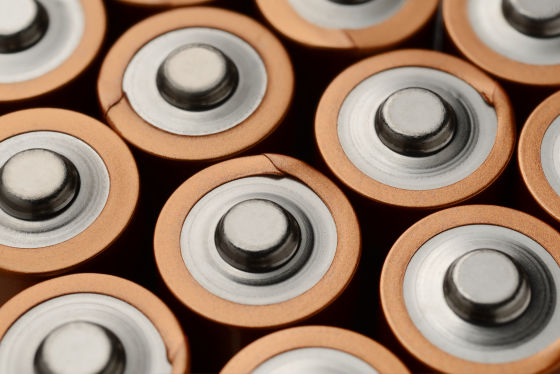The world's first rechargeable “iron-ion battery” will be developed.

by
Lithium-ion batteries are urgently needed to develop alternative batteries because of their high environmental impact and rising prices due to increasing demand. Under such circumstances, the world's first rechargeable iron-ion battery using “iron”, which had been overlooked, was developed.
A room temperature multivalent rechargeable iron ion battery with an ether based electrolyte: a new type of post-lithium ion battery-Chemical Communications (RSC Publishing)
https://pubs.rsc.org/en/journals/journal/cc
Rechargeable Iron Ion Battery – IITM TECH TALK
https://alumni.iitm.ac.in/article/news/rechargeable-iron-ion-battery/
IIT Madras registers initial success with iron ion battery-The Hindu
https://www.thehindu.com/sci-tech/science/iit-madras-registers-initial-success-with-iron-ion-battery/article28976853.ece
Iron Batteries | Could Iron Replace Lithium in Batteries?
https://www.popularmechanics.com/science/environment/a28702497/could-iron-replace-lithium-batteries/
Lithium-ion batteries are used in a variety of electronic devices due to their high energy density, but need to be protected against overcharge, need to be protected from short circuits , require large amounts of water to manufacture, and mine minerals There are various problems such as using toxic chemicals to pollute the environment. In addition, it has been pointed out that the price is rising due to an increase in demand for lithium-ion batteries, and the development of new batteries that meet the energy demand was urgently needed.
Under such circumstances, researchers from Indian Institute of Technology Madras have announced that they have developed a new iron-ion battery. Researchers use iron instead of lithium as charge carriers for multiply charged ions. Iron is cheaper than other metals, has the merits of an ion radius as small as lithium ions and a higher oxidation-reduction potential than lithium ions. As it has been overlooked.

For this reason, the team started to develop an iron-ion battery, but there was a problem in developing the optimal electrolyte for the battery. The developed iron-ion battery uses metal oxide for one electrode and mild steel for the other electrode. This design allowed the team to produce 60% of the performance of lithium-ion batteries.
Iron during charging
Lithium ion batteries must also be manufactured in a controlled environment due to the reactive nature of lithium, which also increases manufacturing costs. In contrast, iron-ion batteries can be manufactured in natural air. In an experiment, the research team showed that iron-ion batteries made in the natural atmosphere deliver 72% of the performance of iron-ion batteries made in a controlled environment.

by Ha4ipuri
This study is the first to prove that iron can be used as a charge carrier for multiply charged ions. As of August 2019, the iron-ion battery withstood 150 cycles of charge and discharge, and the capacity maintenance rate was stable at 54% even after 50 cycles. The energy density, on the other hand, is 220 watt-hours per kilogram, but it is expected that higher energy densities can be achieved through further optimization and testing.
Related Posts:
in Science, Posted by darkhorse_log







